2018 Ford Mustang GT Convertible review
While most wouldn’t agree, my pick of the Mustang line-up is this one, the GT convertible. A bit of nostalgia...
In the early sixties, the suits at Ford came up with what most would agree is the all-American car. In a little over 18 months, the Mustang grew from concept to production reality, and went on to become a piece of the American dream that could be parked in driveways of its home country for less than half the cost of a Corvette. First available in April of 1964, it went on to sell over 600,000 examples in the first year. Some 42 years later, the Mustang soldiers on, still selling strongly thanks to the latest generation – a modern interpretation of a classic that captures the feel-good factor, and adds in the qualities of a modern motor without stifling the rebel within. Not since the original has Ford had such a hit.
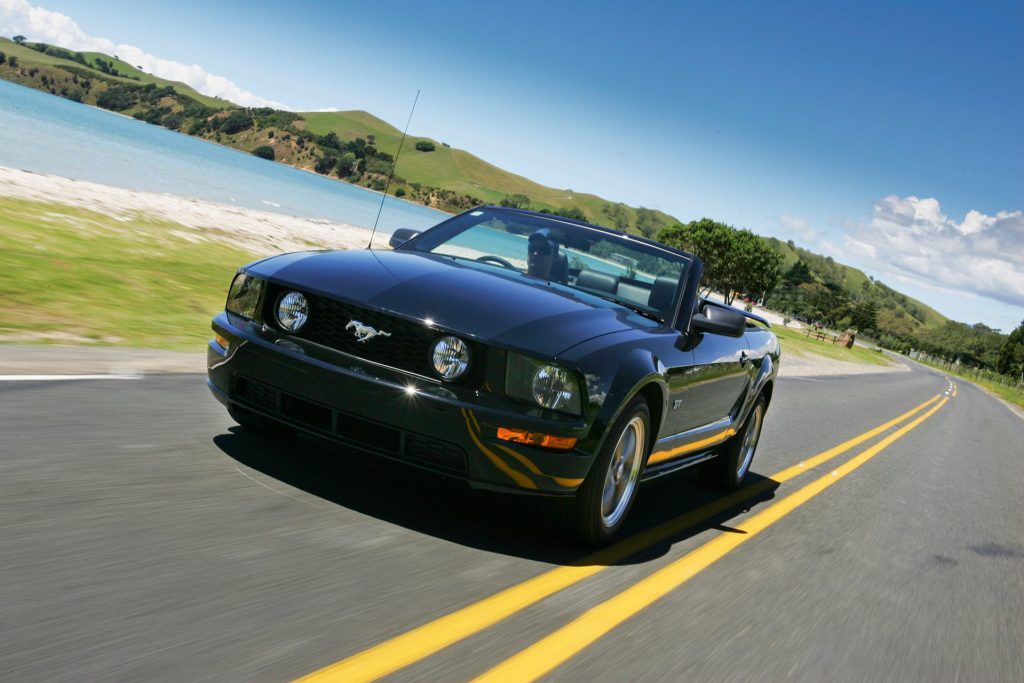
We’ve previously sampled the GT coupé and the tasty Saleen S281, and now we’re behind the wheel of the convertible. Brought along for nostalgia’s sake is a 1970 Convertible. Similarities abound between old and new; both are relatively big cars for four-seat convertibles but it’s clear where the creative seed and styling influences came from for the newbie. Up front, those grilles look similar, as do the lights, bonnet, and front guards. And it’s much the same out back where classic three-element stoplights feature, plus a central gas cap (although it’s faux on the new GT), and a high rear deck.
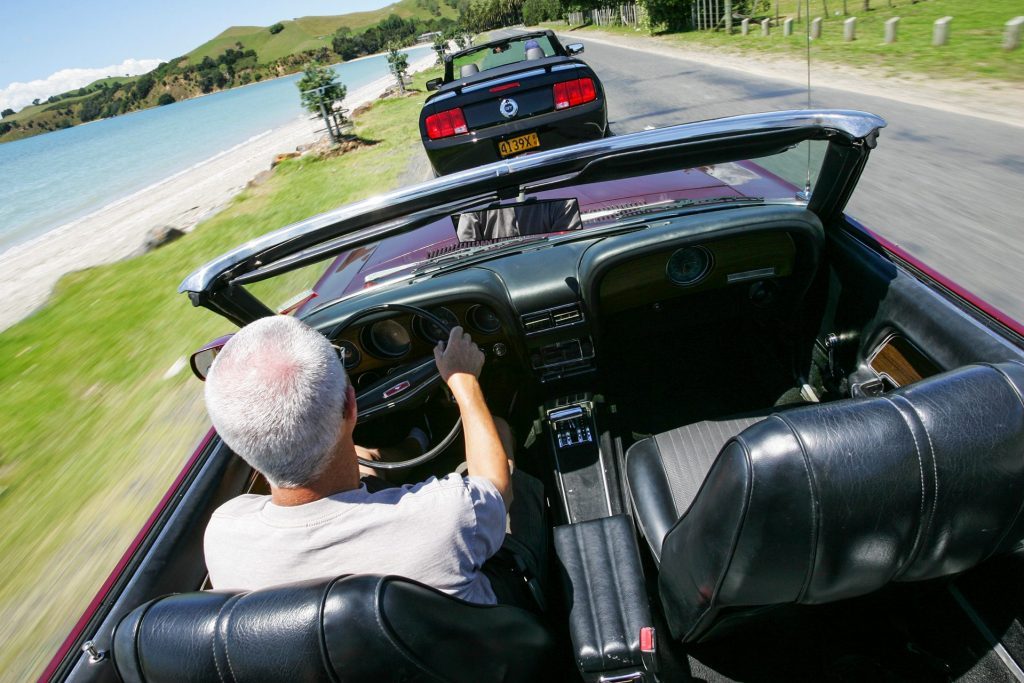
Underneath, not much has changed either. The 70 has independent suspension up front utilising a short-long arm configuration while the GT uses a modern Mac strut set-up. Under the tail, both employ a live rear axle but the GT has long ditched the leaf springs of the 70 model for coil springs and a three-link configuration with a panhard rod and sway bar. Both have an LSD, but where the old 70 model makes do with a three-speed FMX gearbox, the GT has the use of a slick-operating five-speeder.
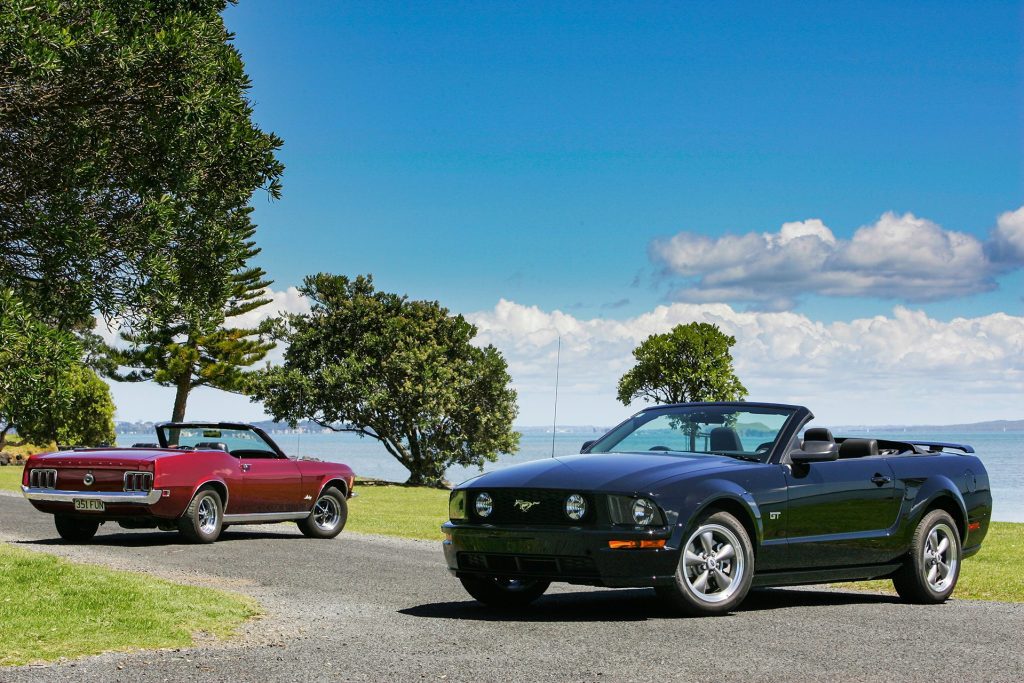
As should every proper Mustang, these two groove to a V8 sound track. The GT has the same alloy 4.6 litre sohc 24-valve modular engine with variable-valve timing as its hard-top brother, with 224kW and 434Nm. The 70 is fitted with the optional 351 Cleveland V8. First introduced in this model year, it has a higher 11.1:1 compression ratio, larger intake and exhaust valves, canted valve cylinder heads, and dual exhausts. With cubes on its side but with just 16 valves, one camshaft, and a four-barrel carburettor, it cranks out similar figures: 225kW and 500Nm.
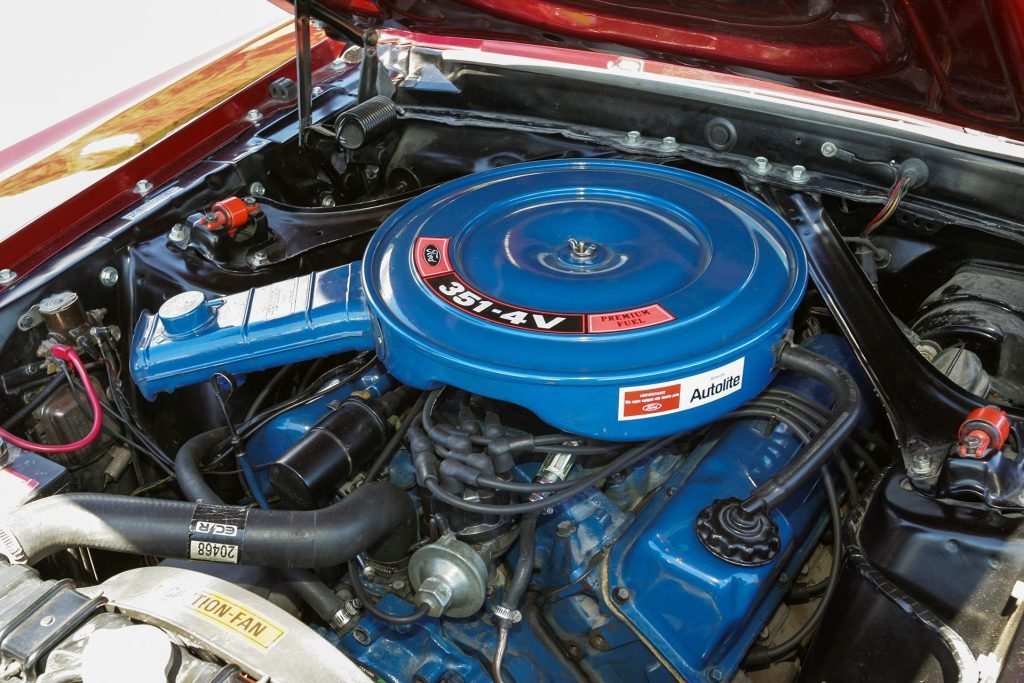
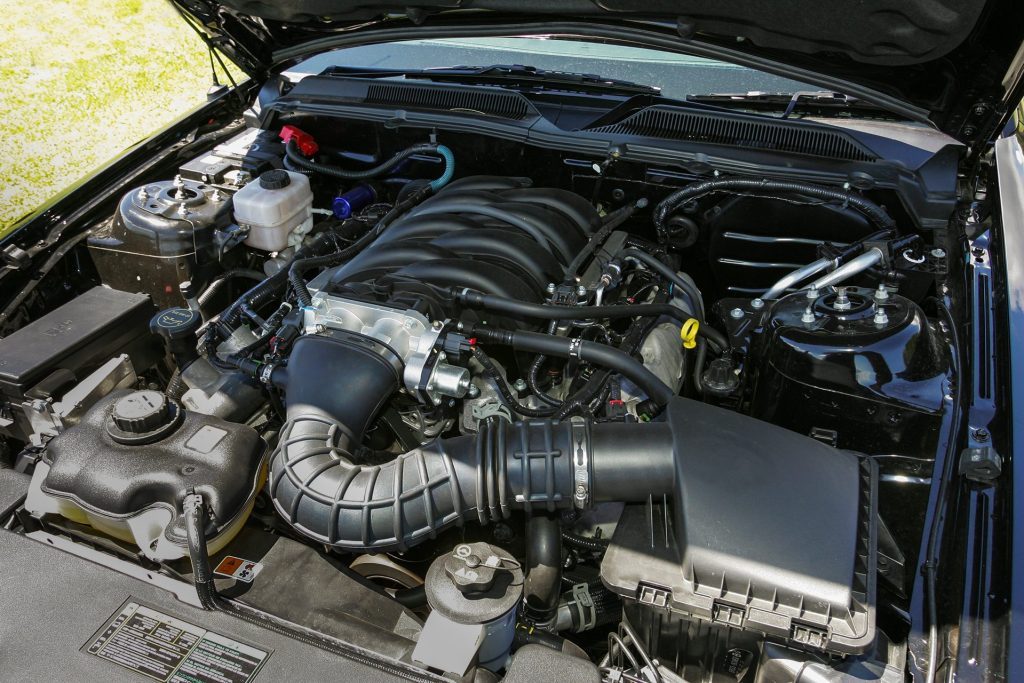
Open-top motoring is the thing for hot days and both Mustangs feature power-operated hoods. While the top of the 70 folds back at the push of a button, the new GT shows just how far the game has moved on. You go through the same unfastening procedure of two latches on the windscreen, but the GT has a glass rear window, is lined on the inside, and folds in a Z-type movement to stow neatly on the rear deck.
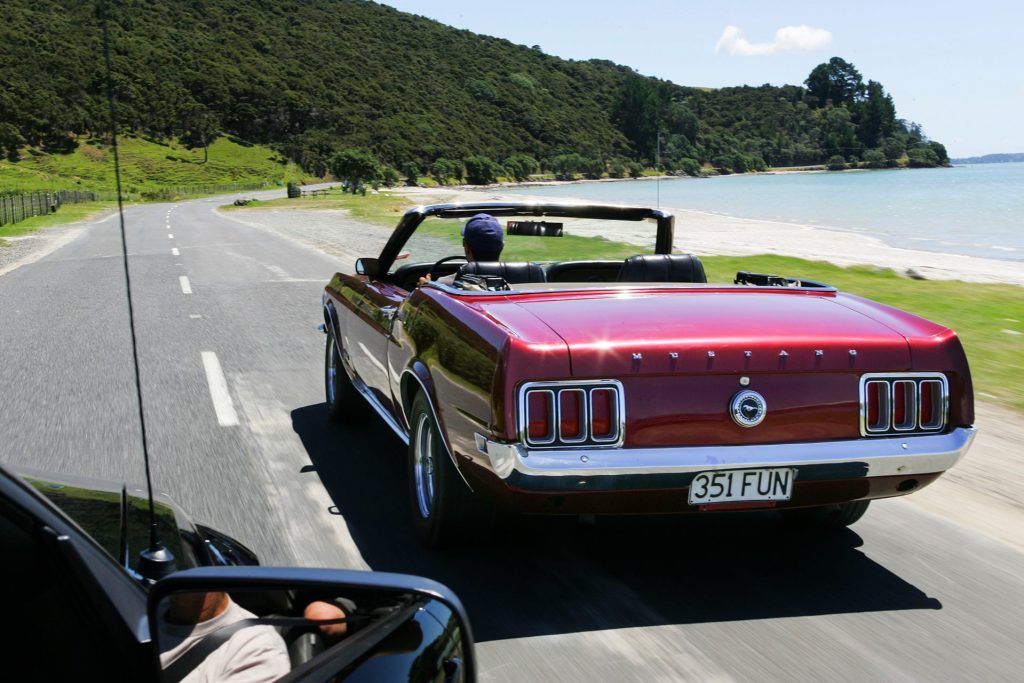
The Mustang Convertible was the car that Bill Ford Jr. wanted, and so he got it. That’s why this new car was designed from the outset to spawn a convertible, requiring only minimal extra bracing for the chassis. There’s a tube up front reinforcing the suspension subframe, a V-shaped brace out back, and extra strength put into the sills and the windscreen, which all adds about 80kg to the weight. Ford reckons it’s more than twice as stiff as the convertible model it replaces, and infinitely firmer than the 1970 model with its flexy Fairlane-based chassis, which was never designed with such open-top intentions.
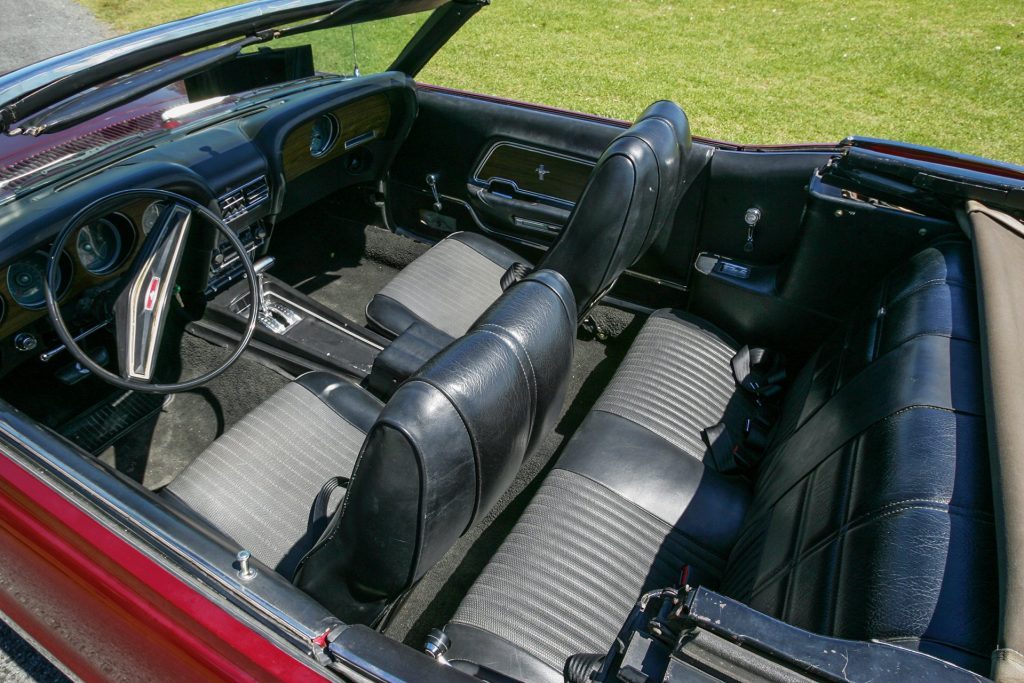
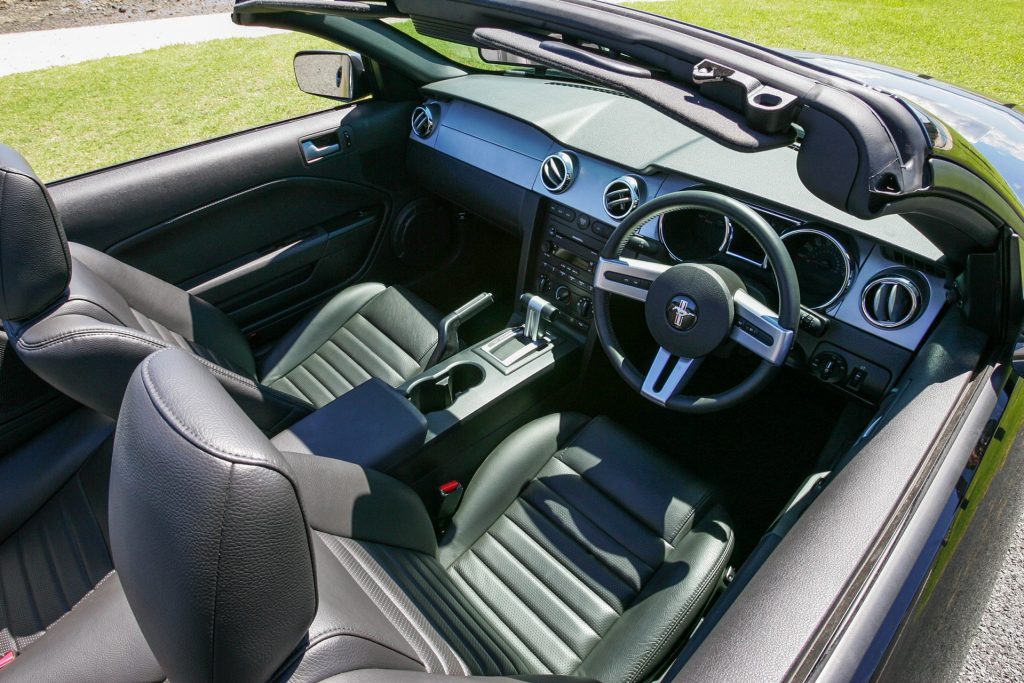
Other differences over the GT hard-top include softer suspension to reduce the amount of shock that would otherwise have been transferred to the body, and this results in a ride more in step with the cruising mentality of the convertible buyer. Where the 1970 chassis shakes, rattles, and quivers over most bumps, the new pony soaks them up without hassle.
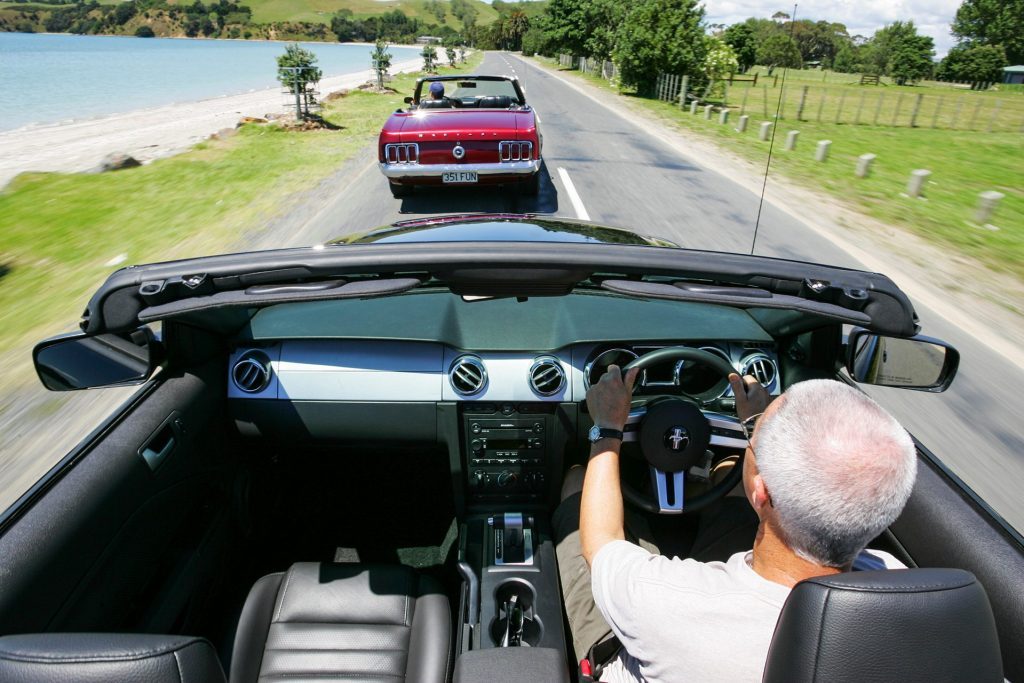
In super-value-meal USA, the Mustang is cheap and cheerful but with a whole heap of substance; a loaded GT convertible cost about $US37,000 (2006). But here we must adapt them for our side of the road. Step in Walton Special Vehicles, New Zealand’s foremost expert at Ford product conversions. Far from a hack-and-glue job, the conversion is first class, and hard to detect by merely casting an eye over the interior and taking the wheel. Apart from the auto shifter being around the wrong way, it’s as though the car left the Ford factory with the wheel on the right side. But this surgery adds to the bottom line as a Mustang GT Convertible like this one costs about $110,000 (2006) in New Zealand. For this type of cash we’re talking about competition from the German brands, which might offer better spec and interior quality but can’t match the staunch looks, grunt, or fun factor that the Ford dishes out with its big stick.
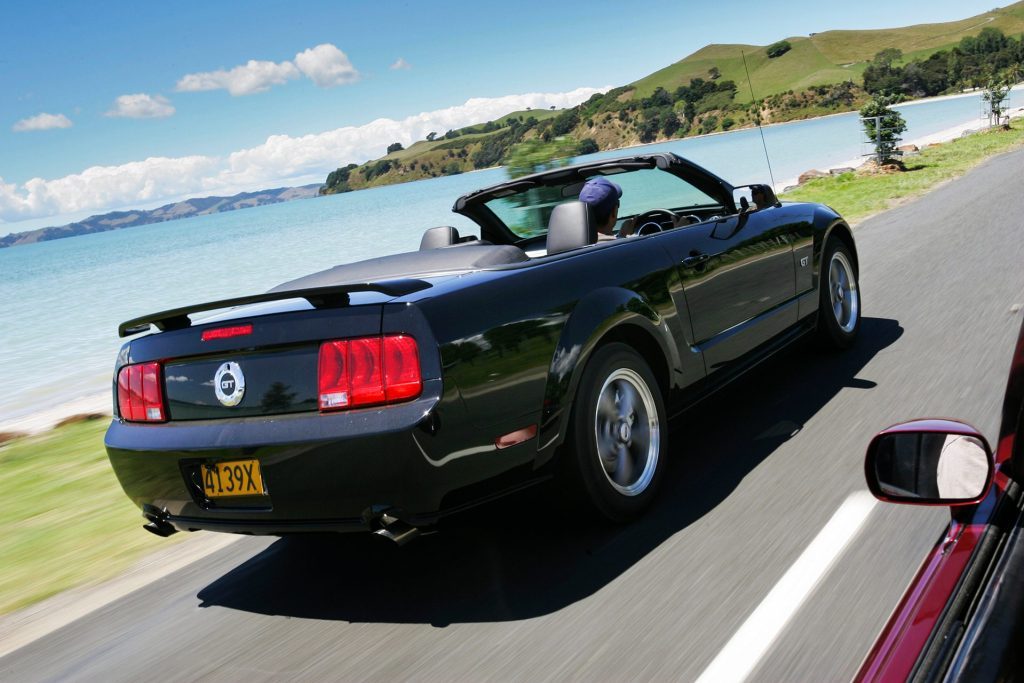
Performance-wise, the convertible is only a heartbeat behind the GT Coupé in the sprint races, recording a 0-100km/h time of 6.2 seconds to the hardtop’s 5.97s.
And it’s oh so easy to reel off these numbers, the live rear squatting under the power but hooking up sweetly while the auto handles the torque efficiently and quickly. The old girl, however, was a real handful, with zero traction off the line. Grunting off with more than a wisp of smoke from the rears, the torque-laden 351 rumbled through to 100km/h in 8.9 seconds, all in first gear (there’s only three, remember). The 80-120km/h times have the GT clocking a 4.11s and the 351 a 5.0s.
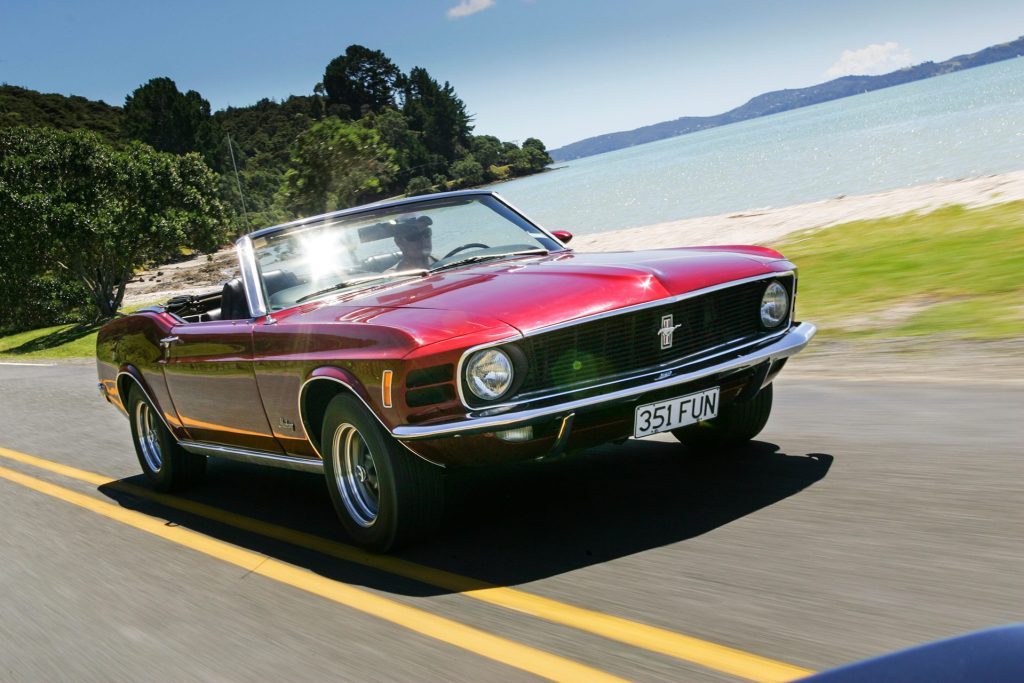
Early Mustangs are notorious for being over-motored and under-braked, and of these characteristics the 1970 example is certainly guilty. Although fitted with optional front disc brakes, they are tiny and woefully inadequate. The GT sheds the reputation with big, modern stoppers and ABS.
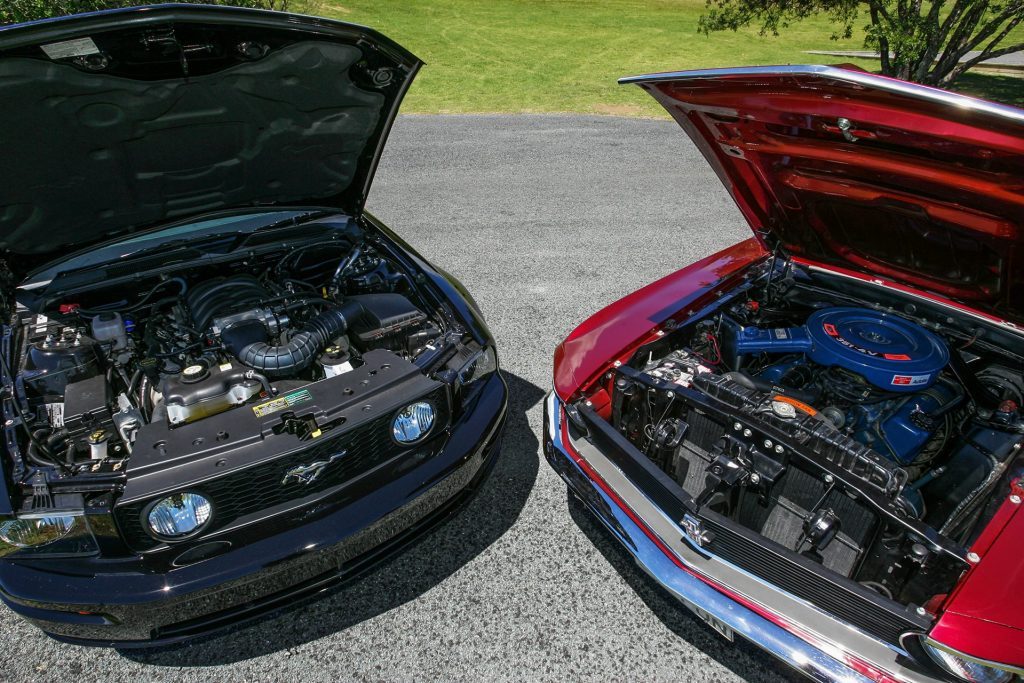
Although lacking brakes, the Cleveland-equipped 70 has smacks of torque; just tickling the throttle has it pulling hard. Even with only three speeds, the V8 roars off on a mere prod of the long-travel gas pedal. This Mustang is certainly an over-motored beast of America’s muscle-car past. The rest is typically yesteryear American, with overly light, free-feeling power steering, and handling that is superb for going in a straight line. And then there’s those brakes…
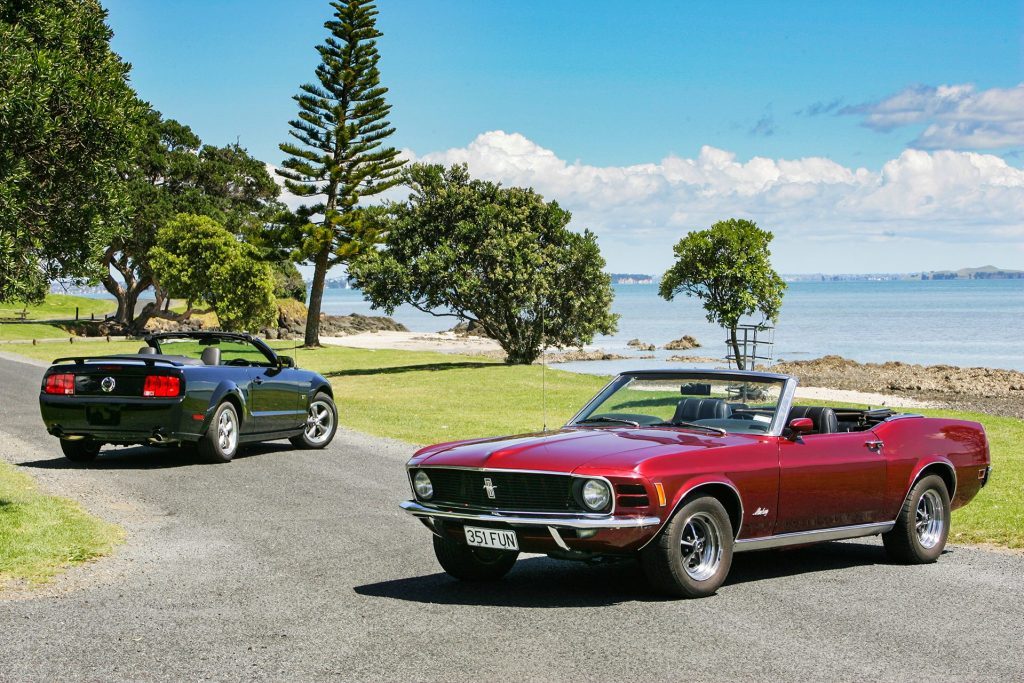
When you swap over to the new GT, you instantly feel how far the Mustang has evolved in 36 years. Behind the wheel, it has all attributes you desire. Its nicely weighted, modern rack-and-pinion steering gives a healthy dose of road feel, and the stonking performance is backed up by good, strong, reliable brakes with a progressive motion to the pedal. And while the handling excels at straight-line cruising, the suspension can cope with a decent strop through the twisties thanks to the compliant nature of the damping and action of the roll bars. With its softer set-up, the convertible isn’t quite as sharp as the hard-top but is still more than passable.
Ford has successfully encapsulated the feel-good shape, look, and appeal of the original Mustangs, and injected all the best of modern advancements into the recipe of this new GT (mind the rear axle, however). Even when compared to the previous model, the latest GT is a huge leap dynamically and visually, and it’s truly one special vehicle.
This article originally appeared in the March 2006 issue of NZ Autocar Magazine.
| Model | 2006 Ford Mustang GT Convertible |
| Price | $90,000+ |
| Engine | 4601cc, V8, EFI |
| Power/Torque | 224kW/434Nm |
| Drivetrain | 5-speed auto, RWD |
| Fuel Use | 13.2L/100km |
| 0-100km/h | 6.20sec |
| 80-120km/h | 4.11sec (118m) |
| 100-0km/h | 38.95m |
| Stability systems | ABS |
| Weight | 1660kg (claimed) |
You may also like…
While most wouldn’t agree, my pick of the Mustang line-up is this one, the GT convertible. A bit of nostalgia...
Part of Mustang’s folklore is its starring role in one of the coolest car chase scenes ever. Ford milks the...
Got a past review you’d like to see posted online?
Our digital archives go back to the year 2000 and we have tested the majority of the new cars released to the New Zealand market during that time.
Let us know which of our historic reviews you’d like to see by submitting the form below.

